CAD REPORT
3DExperiece conference coaxes Solidworks users to the cloud p.10
3D PRINTING
A look at automated approaches to postprocessing metal 3D printed parts p.14 AUTOMATION
Actemium Toronto explains the benefits of process simulation p.19

3DExperiece conference coaxes Solidworks users to the cloud p.10
A look at automated approaches to postprocessing metal 3D printed parts p.14 AUTOMATION
Actemium Toronto explains the benefits of process simulation p.19
Digital hydraulic motion control overhauls legacy tire testing system
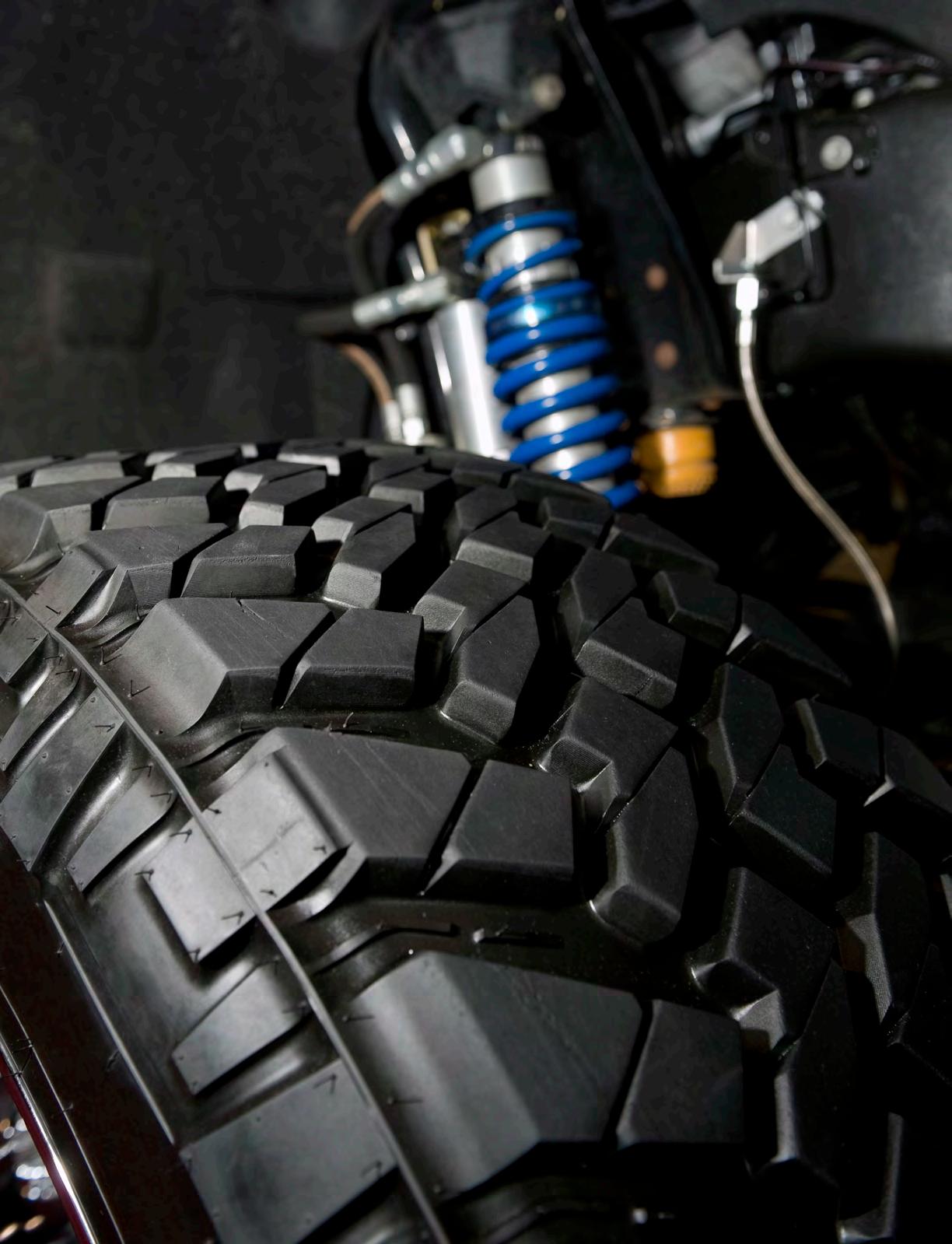







Designing efficient systems involves much more than simply understanding a few basic principles. There is a true art to balancing the specific requirements of an application in order to achieve the desired goals in the best possible way. Help us understand the unique needs of your application and together, we’ll develop something that surpasses what any of us could have done alone.

6 Design News
First hydrogen-powered regional airliner completes first flight and other engineering news.
10 CAD Report
3DExperiece conference coaxes Solidworks users to the cloud with online services offer.
22 Idea Generator
The latest industrial technology including fluid power, actuators, electrical and sensors




As world trade moves toward a post-globalization era, characterized by shorter and presumably more resilient, supply chains, “friend-shoring” has become the new watchword. Call it a transition to hemispherization, in which North America coalesces, as much as its able, into a self-sufficient unit, untethered from eastern hemisphere’s squabbles over resources and regional influence.
Nowhere is that trend more keenly felt than in the electronics and automotive industries. Both rely (or will increasingly rely) on computer chips, rechargeable batteries and their constituent materials (e.g. cobalt, lithium, etc). However, both also depend on China, the home to 4 of the 10 largest battery manufacturers, which produce 558MWh of battery capacity annually. According to the 2021 S&P Global Market Intelligence report, the U.S. is a distant second at 44GWh.
More troublesome still is that nearly all lithium ion batteries depend on the Democratic Republic of Congo (DRC) which possesses four-fifths of the world’s cobalt. Extracting the brittle mteal there, however, is a dirty business in every sense of the word, not least of which are the reportedly horrific labor conditions in the mines. Even so, mining analyst firm, Benchmark Mineral Intelligence, estimates that satisfying global battery demand for EVs alone by 2035 will require more than 380 new mines for cobalt, graphite, nickel and lithium.
Given that, it’s not surprising car makers have found Canada so attractive in recent years. As luck would have it, the next door neighbor of the auto industry’s largest customer ranks in the top four globally in the production of cobalt, nickel and graphite and sixth in lithium production. What’s more, a large chunk of the energy required to extract and fashion those minerals would come from renewable sources like hydroelectric. Add in the sourcing requirements of the U.S.’s oddly named Inflation Reduction Act, and Canada gets prettier by the moment.
The catch is that ramping up mining and battery production, and securing business based on that potential, doesn’t come cheep. As reported by the CBC, former Toyota Canada GM and McMaster engineering professor, Greig Mordue, estimates that securing Volkswagen’s recent EV battery giga-factory slated for St Thomas, ON may have cost the Ontario and Canadian governments upwards of $10 billion. That’s in addition to the $1 billion subsidy paid to secure Stellantis’ $5 billion Windsor battery plant last year.
While Canada’s automotive manufacturing future may hinge on landing these deals, Canada should leverage its unique appeal and not repeat the lavish give-aways of the past.
MIKE MCLEOD
Editor
mmcleod@design-engineering.com
Editorial Board
DR. ALAIN AUBERTIN
President & CEO, Canada Consortium for Aerospace Research and Innovation in Canada (CARIC)
DR. MARY WELLS, P.ENG
Dean, Faculty of Engineering / Professor, Mechanical and Mechatronics Engineering; University of Waterloo

AJAY BAJAJ, P.ENG
President and CEO, Rotator Products Limited; Past President and Board Member, Power Transmission Distributors Association (PTDA)
DR. ISHWAR PURI, P.ENG Vice President of Research; Engineering Professor, University of Southern California
MARCH/APRIL 2023
Volume 68, No.2 design-engineering.com
READER SERVICE
Print and digital subsciption inquiries or changes, please contact
Angelita Potal
Tel: (416) 510-5113
Fax: (416) 510-6875
Email: apotal@annexbusinessmedia.com
Mail: 111 Gordon Baker Rd., Suite 400, Toronto ON M2H 3R1
SENIOR PUBLISHER Paul Burton (416) 510-6756 • pburton@annexbusinessmedia.com
ASSOCIATE PUBLISHER Kathryn Swan (416) 510-6757 • kswan@annexbusinessmedia.com
EDITOR Michael McLeod (416) 442-5600 ext. 3231 mmcleod@design-engineering.com
NATIONAL ACCOUNT MANAGER Ilana Fawcett (416) 829-1221 • ifawcett@annexbusinessmedia.com
ACCOUNT COORDINATOR Cheryl Fisher (416) 510-5194 • cfisher@annexbusinessmedia.com
AUDIENCE DEVELOPMENT MANAGER
Beata Olechnowicz (416) 510-5182 • bolechnowicz@annexbusinessmedia.com
PRESIDENT/COO Scott Jamieson sjamieson@annexbusinessmedia.com
Design Engineering, established in 1955, is published by Annex Business Media, 6 times per year except for occasional combined, expanded or premium issues, which count as two subscription issues.
Printed in Canada
Publications Mail Agreement #40065710
ISSN: 0011-9342 (Print), 1929-6452 (Online)
Subscriber Services: Canada: $57.50 for 1 year; $92.50 for 2 years; $10 for single copy.
Outside Canada: USA - $140.50; Overseas - $151.00; $10.00 for single copy.
All prices in CAD funds. Add applicable taxes to Canadian rates.
From time to time we make our subscription list available to select companies and organizations whose product or service may interest you. If you prefer not to receive this information, please contact our circulation department in any of the four ways listed above.
Annex Business Media Privacy Officer: privacy@annexbusinessmedia.com
Tel: 800-668-2374
No part of the editorial content of this publication may be reprinted without the publisher’s written permission.
©2023 Annex Business Media. All rights reserved. DE receives unsolicited features and materials (including letters to the editor) from time to time. DE, its affiliates and assignees may use, reproduce, publish, re-publish, distribute, store and archive such submissions in whole or in part in any form or medium whatsoever, without compensation of any sort. DE accepts no responsibility or liability for claims made for any product or service reported or advertised in this issue. DE is indexed in the Canadian Business Index by Micromedia Ltd., Toronto, and is available on-line in the Canadian Business & Current Affairs Database.
End-of-arm tooling starter kits include all the components needed to create a single-beam or dual-beam end-of-arm tool for a vacuum pick-and-place application. Kits are simple, save time and money, but still allow a degree of customization.
First, cut the structural rail to the desired length, determine the location of the suction cups, and then assemble the unit. Once assembled, add the robot interface flange for your brand of robot or drill your own using the included blank robot flange. That’s all it takes and your tooling is ready to go!
Features


• Starter kits are easily assembled
• Includes structural rail, connectors, cup mounts, vacuum tubing, vacuum cups, fittings, basic ejector, flange for Universal robot, and a blank robot flange
• Can be built to use internal or external vacuum

• Additional robot flanges are available to connect to Fanuc, Rethink, Universal, and Yaskawa robot arms


• Single profile kit with minimum active 20 pound-force load (90 N), maximum active 78 pound-force load (350 N)
• Double profile kit with minimum active 56 pound-force load (250 N), maximum 140 active pound-force load (625 N)
Also Available
• Vacuum suction cups in flat and bellowed styles made from Elastodur, silicone, or Nitrile in sizes up to 78mm



• Vacuum ejectors with a high suction rate of up to 860 I/min










• Spring plungers for vacuum cup mounting

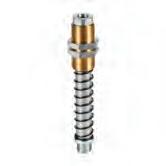

• Couplers in G1/8 and G1/4
Our shipping policies make it easier than ever to order direct from the U.S.!

Fast free standard shipping* is available for most orders over $49 U.S., and that includes the brokerage fees (when using an AutomationDirect nominated broker). Using our choice of carrier, we can reach most Canadian destinations within 2 to 3 days.

*Free shipping does not apply to items requiring LTL transport, but those shipments can take advantage of our negotiated super-low at rates (based on weight) that include brokerage fees.
See Web site for details and restrictions at: www.automationdirect.com/canada



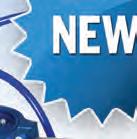
To see all products and prices, visit www.automationdirect.com













All prices shown are U.S. Dollars

Universal Hydrogen Co. announced it successfully completed a test flight of its modified 40-passenger Dash-8 regional airliner using hydrogen fuel cell propulsion. Nicknamed Lightning McClean, the airplane flew for 15 minutes, reaching an altitude of 3,500 mean sea level. The flight, conducted under an FAA Special Airworthiness Certificate, was the first in a two-year flight test campaign, with passenger service expected to begin in 2025.
For its first test flight, the airplane employed one conventional turbine engine for safety. The plane’s other engine was the company’s fuel cell-electric, megawatt-class powertrain, built around Plug Power’s ProGen family of fuel cells modified for aviation use. The powertrain’s design is unique in that it doesn’t use a battery; instead, the fuel cells drive the electric motor directly. The motor is a modified magni650 electric propulsion unit and power electronics supplied by Everett-based magniX.
“During the second circuit over the airport, we were comfortable with the performance of the hydrogen powertrain, so we were able to throttle back the fossil fuel turbine engine to demonstrate cruise principally on hydrogen power,” said the company’s test pilot, Alex Kroll.
The company is backed by GE Aviation, Airbus Ventures, Toyota Ventures, JetBlue Ventures and American Airlines, as well as several hydrogen producers and financial investors. From regional airplanes, the company says it plans to progress to larger ones and to hydrogen fuel deliveries for other mobility applications using its modular logistics network. www.hydrogen.aero
Ford Motor announced the formation of Latitude AI, a wholly owned subsidiary focused on developing a hands-free, eyesoff-the-road automated driving system. The car maker says the subsidiary marks a milestone in its shift toward advanced driver assist systems (ADAS) for personally owned vehicles.
The Latitude AI subsidiary will also help develop Ford’s Blue Cruise technology that allows for hands-free driving on HandsFree Blue Zones, prequalified sections of highway that make up roughly 200,000 kilometres of North American roads, the company says.

Ford says it has hired approximately 550 employees, formerly of Argo AI, across multiple disciplines including machine learning
and robotics, cloud platforms, mapping, sensors and compute systems, test operations, systems and safety engineering.
Sammy Omari, executive director, ADAS Technologies at Ford, will also serve as the CEO of Latitude. Peter Carr will serve as CTO, overseeing Latitude’s product and technical development and David Gollob is named president to oversee business operations. Latitude is headquartered in Pittsburgh with additional engineering hubs in Dearborn, Mich. and Palo Alto, Calif. The company will also operate a highway-speed test track facility in Greenville, S.C. www.ford.ca
General Motors announced plans to manufacture its Ultium electric drive units at its St. Catharines Propulsion Plant. The investment is expected to create approximately 500 jobs at the St. Catharines facility and result in the production of more than 400,000 EV drive units a year.
“This is a time of historic transformation for our industry and with this significant investment, St. Catharines will play a critical role in our EV future,” said Marissa West, president and managing director of GM Canada.
The drive units built at St.
Universal Hydrogen’s modified Dash-8, nicknamed “Speedy McClean,” successfully completes first flight of a hydrogen-powered regional airliner. Photos: Business Wir,e, Ford Motor CompanyCatharines will be used in vehicles built on GM’s EV architecture, called Ultium. According to the company, Ultium will power its electric Cadillac LYRIQ, Chevrolet Equinox EV, Chevrolet Blazer EV, Chevrolet Silverado EV, GMC Sierra EV, and GMC HUMMER SUV EV.

The St. Catharines investment follows on other GM Canada investments including a CAD$28
million Renewable Energy Cogeneration project at St. Catharines; Canada’s first large-scale EV plant in Ingersoll Ontario, an Ultium CAM Cathode Active Materials facility under construction in Bécancour, Quebec and an expansion of GM’s Canadian Technology Centre in Oshawa and Markham, Ontario.


www.gm.ca
Rockwell Automation announced that it acquired Knowledge Lens, which the company describes as a services and solutions provider delivering business insights by combining digital technologies with data science, AI and engineering expertise. Rockwell says the India-based company will join its digital services business, Kalypso, to expand
“Data offers enormous advantages for those manufacturers able to harness its full potential. But for many, only a fraction of the data generated by their plants and in their supply chains is ever used,” said Rockwell’s senior vice president of Lifecycle Services segment, Frank Kulaszewicz.
“The acquisition of Knowledge Lens improves our ability to help more manufacturers around the world discover and use the hidden insights in their data to drive game-changing value for their businesses.”
www.knowledgelens.com
Researchers from Sandia National Laboratories announced the
Delta’s RMC motion controllers replicate the real world with precise closed-loop control of position, pressure, and force — while tracking, capturing and storing every move at fast motion-loop rates. And RMCs integrate quickly and easily with data analysis software.
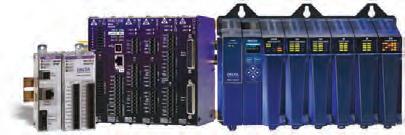
Get real-world testing examples from our case studies and a free Design Guide.
Visit us at deltamotion.com or call us at +1-360-254-8688
General Motors’ line of Ultium electric drive motors. Photo: General Motors3D-printing technologies like laser engineered net shaping, shown here, are helping scientists at Sandia National Laboratories rapidly discover, prototype and test new materials.
creation of a 3D-printed superalloy that is stronger and lighter than materials currently used in gas turbine machinery. As a result, it could help power plants generate more electricity while producing less carbon and have broader impacts on the aerospace and automotive industries.

“We’re showing that this material can access previously unobtainable combinations of high strength, low weight and high-temperature resiliency,” said Sandia scientist Andrew Kustas. “We think part of the reason we achieved this is because of the additive manufacturing approach.”
The research team’s claim is based on the fact that the efficiency of fossil fuel and nuclear power plants is limited by the amount of heat their turbines can withstand. A turbine made from a metal that retains its strength at high temperatures would therefore allow the generators to convert more heat to electricity.
According to Sandia’s experiments, its superalloy – composed of 42% aluminum, 25% titanium, 13% niobium, 8% zirconium, 8% molybdenum and 4% tantalum –was stronger at 800°C than many other high-performance alloys, including those currently used in
turbine parts, and still stronger when it was brought back down to room temperature.
The Sandia team used a laser engineered net shaping 3D print process to melt together its constituent powdered metals and then print a sample of it. Moving forward, the team says it will explore whether advanced computer modeling techniques can help researchers discover more members of what could be a new class of high-performance, additively manufactured superalloys. That said, the team acknowledges that its superalloy could be difficult to produce in large volumes without microscopic cracks and that the materials that go into the alloy are expensive.
www.sandia.gov
DARPA announced that its artificial intelligence algorithms, developed under the agency’s Air Combat Evolution (ACE) program, have successfully piloted a physical F-16 in flight. Begun in 2019, the ACE program aims to enable autonomous, AI-driven air combat using human-machine collaborative dogfighting.
In August 2020, the ACE program’s AlphaDogfight Trials pitted AI algorithms against each other flying simulated F-16s in a virtual dogfighting competition. The winning AI was then pitted against and defeated an experienced F-16 fighter pilot flying in a simulator.
In December 2022, however, the previously computer simulation-bound dogfight AI algorithms were uploaded to a modified F-16 test aircraft, named the X-62A or VISTA (Variable In-flight Simulator Test Aircraft),.
During the test, DARPA says the F-16 flew multiple flights over several days at the Air Force Test Pilot School (TPS) within Edwards Air Force Base in California. According to the U.S. military research agency, the flights successfully demonstrated that AI agents can control a full-scale fighter jet and provide live-flight data.
The X-62A/ VISTA aircraft is a highly modified, two-seat F-16 that can be programmed to model the flight-handling characteristics of different aircraft, DARPA said. It was also upgraded to include the System for Autonomous Control of Simulation (SACS), making it a suitable to test ACE’s autonomous F-16 AI agents, although a human pilot was on board as a failsafe. DARPA said AI contributors, including EpiSci, PhysicsAI, Shield AI, and the Johns Hopkins Applied Physics Laboratory, flew different F-16 AI algorithms on the X-62A. www.darpa.mil

Levitating planar movers
6D motion Scalable payload kg
Velocities up to 2 m/s
Individual product transport Free system layout
XPlanar enables new dimensions of freedom in product and material handling: Levitating planar movers
fly over flexibly arranged planar tiles accommodating nearly any track layout and path planning.
Individual 2D transport at up to 2 m/s
Processing with up to 6 degrees of freedom
Transport and processing in one system
Wear-free, hygienic and easy to clean
Free arrangement of planar tiles enabling totally customized machine and process layouts
Multi-mover control enables parallel and individual product handling

Fully integrated into the powerful and standardized PC-based Beckhoff control system (TwinCAT, PLC IEC 61131, Motion, Measurement, Machine Learning, Vision, Communication, HMI)
For use across all industries: assembly, packaging, food/bev, pharma, laboratory, entertainment, …

It’s been 13 years of Solidworks users stubbornly sticking to the desktop. Dassault Systemes efforts to tempt users to the cloud have not succeeded, despite the promise of “effortless, easy design” products that ought to replace Solidworks.
So, at this year’s 3DExperience World 2023, Dassault handed out more candy. Senior VP of 3DExperience Works, Gian Paolo Bassi, said that “Everyone in the Solidworks community should be taking advantage of all that 3DExperience Works has to offer.” To reinforce this point, he announced that, as of July 2023, every seat of Solidworks will include cloud services. It turns out he meant Collaborative Designer for Solidworks, and not the entire Solidworks Cloud stack or all of 3DExperience.
What is included is 3DExperience Connector for Solidworks (for product data management), Collaborative Industry Innovator role (for document collaboration), and 3DSWymer (a link to 3DSWym for social collaboration). To get this US$1,500/ yr worth of software, new customers have to buy two years of maintenance; existing customers pay US$300/year. Document sharing and mark-up through Web browsers is something other CAD vendors already offer at no added cost.
The Solidworks-
Solidworks files are incompatible with Dassault’s other software, and so the company has struggled
with bridging the gap. To address this, Solidworks CEO Manish Kumar took to the 3DExperience World stage to explain how easily Solidworks links with 3DExperience: “Your admin invites you, and you get an email with a link to get started... you install everything that’s needed.” Given that most Solidworks customers are oneand two-user shops, it’s not clear to me where the admin part fits in.
Once you log in to 3DExperience, you get access to a certain number of specialized design, analysis and other programs. To reduce confusion, Dassault bundles the apps as “roles” related to your discipline, like sheet metal design. Your role gives you access to some apps, but blocks others, because using more apps costs more.
A portion of the 3DExperience environment is available to
Dassault Systemes Senior VP, Gian Paolo Bassi, announcing free 3DSwymer licenses to all Solidworks users at 3DExperience World 2023.

desktop Solidworks users under the name of Solidworks Cloud. To link the two requires that you first be assigned the Collaborative Designer role by your administrator. As the second step, you launch Solidworks Connector so that Solidworks desktop can communicate with 3DExperience/ Solidworks Cloud.
Next, you load an assembly into Solidworks, and then upload it to the cloud. At this point, the Derived Format converter kicks in to create a copy derived from your Solidworks model. Derived means that equivalent parts are generated for 3DExperience in the sense that 2D drawings are derived from 3D models. Solidworks’ native .sldprt part and .sldasm assembly files are not converted in the traditional process of file translation, and there is no round-tripping.
Although the process is oneway, you can work in both environments. The derived parts update when you change the originals in Solidworks; at the same time you can be editing and analyzing parts with apps provided through Solidworks Cloud.

With the metaverse and ChatGPT being in the news, Dassault Systemes CEO Charles Bernard opined, “I think the Metaverse [Facebook] runs the risk of illusion.” As contrast, he said, “What we do is a virtual twin of the real world.” Virtual twins are CAD copies of finished products.
He described the ways in which the company’s 3DExperience software already does AI, such as predicting mates, recognizing sketch entities, guessing the next command selected by users,
and generating specs of any 3D model from any source, such as 3D scans.

However, “In order that artificial intelligence help you, it needs to learn from data – so, this is aggregated data – it gives us more ways to serve you.” Autodesk also remotely records user actions

to feed AI-like capabilities. The American FTC, however, has warned software companies against claims that AI can make predictions.
One new function is branching: 3DExperience keeps track as you create variations of models. Some of the revision interface looks not
too different from the one pioneered by PTC’s Onshape. Parts are centralized so that drafters cannot invent their own special ones, with bookmarks for accessing oft-used parts.
One conference session was tantalizingly titled, “Solidworks Cloud on a Mac?” but it wasn’t about Solidworks nor about Mac. It demo’ed Dassault’s cloud-based X-series software (not Solidworks) on an iPad (close enough). The software runs in Web browsers, so works on “any” computer “anywhere.” The anywhere aspect was shown by Germany’s X-Custom Engineering, whose owner reviewed a design at a picnic table north of Norway’s Arctic Circle.
At 3DExperience World, Dassault provided a heads-up of some of what will be new in the next release of Solidworks, with the full reveal coming later in the year. Dassault said that out of all users’ wish list requests, about ten are added to each release.
For example, in 2D drawings of assemblies, the upcoming release will be able to open linked drawings with a new right-click option, as well as open them from BOM lists (bills of material), and from drawing views.
In addition, BOMs can be filtered like spreadsheets, to reduce the number of rows and so list only specific parts; linked balloons hide to match. Overridden BOM cells will be shown in a different color on the screen, but are printed in black, and can be restored to original values.
In the meantime, Dassault is still adding features to last year’s release through service packs. For instance, broken mates are now resolved automatically, and large assemblies are easier to manage through an automatic lightweight display mode. Similar corners can be grouped together for frames generation, and PDFs now are extracted better.
Solidworks Cloud includes nine browserbased design apps that create mechanical, complexshaped, frame structured, and sheet metal designs, as well as 2D drawings, 3D annotations; photorealistic renderings and product documentation.

It seems to have become a tradition for this event to feature unintended showdowns between the future directions upper level executives want to emphasize in their finely-tuned presentations, and what paying customers are actually looking for.
A manager from Sealed Air broke the spell of the keynote’s all-3D-experience when he matter-of-factly stated, “As of today, we probably have about 60% of our design still in 2D.” Solidworks CEO Kumar responded, “Okay. That’s impressive.” The 60% figure is probably indicative of the entire CAD industry.
Every 6-8 weeks, 3DExperience users receive updates so that everyone is on the same version; there are no forwards or backwards file compatibility problems, Dassault says. When a user asked how Solidworks desktop would keep up, since the 3DExperience format changes every 6-8 weeks, CEO Kumar told him, “It’s up to you to keep desktop up-to-date.”
When the user pressed the question of knowing when changes become available, Kumar joked, “That’s your top-ten [wish list] number 11, I guess.”
When another user said his firm prefers to upgrade every other release due to bugs, Kumar told him, “We realize the pain, we
realize the problem, but if you do not upgrade at a faster pace – you believe the risk is low, but the risk is higher.” The risk, he felt, is from there being more issues with a big jump than if you install every service pack. On the other hand, he admitted, Dassault has not allowed any employee to upgrade to the 1.5-year-old Windows 11.
Even though the overwhelming message at the annual Solidworks user event is “experience 3D,” it is a relief to users to see Dassault giving up on deep-sixing the world’s most popular MCAD program. It does, after all, earn the company over a billion dollars a year.
But the urge to cloud-ize seven million Solidworks users remains strong, and so each year the French company’s throws them a cloudy tidbit, like this year’s 3DSWymer, to help accelerate adoption. With Solidworks gaining 60,000 new desktop customers annually, the switch to cloud-only won’t be happening in our lifetimes. So, it’s good to see Dassault strengthening Solidworks, solidly, and now several times a year. |DE www.solidworks.com
Retirement is finally approaching… now what? The Engineers Canada-sponsored Financial Security Program offers a registered retirement income fund (RRIF) and life income fund (LIF) that turns your hard-earned savings into a steady stream of income for your retirement years.
You’ll also continue to enjoy the advantages you’re already used to with your group plan – such as lower-than-retail fees*, certified Canada Life support and continued access to the Canada Life website and statements.
Speak with an investment and retirement specialist to see if the program is right for you. They’ll help you understand your income options, give you a detailed income estimate and build a plan with you.
Email: retirementready@canadalife.com
Phone: 1-800-724-3402
weekdays from 8 a.m. to 8 p.m. ET.
The Engineers Canada-sponsored Financial Security Program is exclusive to engineers and geoscientists, as well as their families, across Canada.

A plan built just for you.
The use of metal additive manufacturing (AM) has revolutionized the manufacturing industry, allowing for the creation of complex and intricate parts in a faster and more cost-effective manner. However, post processing of these parts introduces time and financial constraints to the overall costper-part that can negate the benefits of AM altogether.
Support removal is the critical first step of post processing metal AM parts, but it’s also a challenging one. Today, supports are still essential for part fidelity during the manufacturing process, but they must be removed to achieve the required finished product with the intended shape, features and tolerances.
While manual support removal is still the status quo for many applications of metal
AM, the transition to automated support removal (and finishing) solutions requires a look at the advantages and disadvantages of using CNC systems versus robots.

There is an argument that the support removal conundrum in AM will eventually be resolved by so-called support-free printing. Of course, this would be the ultimate
goal, allowing complete design freedom with optimized resource efficiency, whereby raw materials and energy are only being used to make the final part and not the supports. Unfortunately, the AM sector is not there yet. While supports are being minimized through design, they are still — and will be for the foreseeable future – a necessity. Minimizing the amount of material and energy used for supports is the right thing to do in almost every situation. However, it can also compromise design freedom and have a negative impact on the desired functionality of the end-use part.
For example, a part may need to be designed with filled cavities or overhangs leading to loss of light-weighting. Similarly, generative designs may be unnecessarily constrained to get the angles needed for reduced supports. A focus on support reduction can also affect process efficiency. For example, long parts may have to be built in a specific orientation and therefore take up more of the build plate, and stacked builds may become impractical because of the interconnecting support structures.
Shockingly, manual support removal remains the process of choice for the majority of AM users. It requires highly trained technicians employing all manner of traditional hand tools. It is tried and tested but requires skill, problem-solving and creativity. It can be well suited to high mix, low volume production environments.
However, manual support removal is also very time-consuming, labor-intensive, messy, and often produces toxic dust that
A look at which automated approach is superior for support removal and finishing of metal 3D printed parts.Rivelin Robotics’ NetShape robots automate support removal, finishing, polishing and blasting tasks on metal AM parts.
requires PPE or shielded environments. Risk of powder ignition and explosion, and repetitive strain injuries are common problems. In addition, it is not accurately repeatable with variability from person to person and even from shift to shift causing quality control problems and increases in scrap rate. It is also difficult to scale if the demand for AM parts begins to increase significantly.
There has been some progress with solutions for automating the post processing of metal AM parts. The most common has been the utilization of CNC milling machines, a proven technology for a variety of manufacturing applications, including a hybrid approach to AM. They are undeniably accurate and repeatable.
CNC can work well if the
part in question has tightly toleranced features, and where flatness, circularity, concentricity or dimensions have to be within a few microns. It is also the preferred technology for support removal in large batch builds where geometries are simple or lend themselves to easy fixturing in only a couple of orientations. Similarly, it can be a good fit for prints where platform removal with a CNC EDM takes care of the majority of supports.
However, CNC machines are not a good solution for thin-walled components, space-saving stacked builds and parts with lattice structures or breakaway supports. It is also fair to say that CNC programmers don’t like oneoff generatively-designed organic shapes with compound curves.
This begins to clarify and strengthen the argument against CNC for support removal in the AM ecosystem.
One of the main drivers of AM is the flexibility of design that allows users to iterate, customize and upgrade components from one batch to the next. That means it is rare for companies using AM for production to invest in rigid industrial automation. Any iteration, any change to the design would mean a new CNC trajectory for a new tool path and come at a high cost. AM needs this design flexibility to be carried to every step of the manufacturing process chain.
The problem is similar for tooling and fixturing. The kinds of high-precision fixtures required for rigid industrial automation just don’t make sense unless you
are prepared to commit to a design long term.

And then there’s the problem of batch-to-batch variability. Even if you did have a perfect fixture and a perfect tool path, relying on a perfectly predictable support surface straight from the printer may not be the best idea.
This is because it is expected that AM supports deflect so AM parts don’t have to. AM supports are made thin to maximize the use of powder stock. Thin connections are made to the component to minimize surface witnesses and to make it easy to break away the scaffolding.
Material composition is even changed between batches sometimes, all of which means supports may look and behave very differently from one batch to the next.
AM needs automation that can adapt to variability, especially for support and witness removal. And this challenge has been solved through the use of sophisticated software and artificial intelligence systems to help generate toolpaths and robot motions without mobilizing an entire systems engineering team. This then allows for quick iteration as well as
automation of small batches.

3D scanning can be used to locate parts instead of high-precision fixtures, which means desktop FDM printers can be used to make plastic fixtures quickly without worrying about accuracy or changes to the design. In addition, force sensors can be used to feel the surface and adapt the machining accordingly, or to spend more time on high spots until


the final shape is reached or to polish to a consistent finish.
One huge advantage is that any tool can be used for support removal and finishing. If it is already known what tools work well with the materials or the types of supports printed, the same exact tools can be attached to a robot to automate with more confidence. With today’s technology, the steps to add a new custom tool are basically like adding a new type of endmill to a CNC machine and doesn’t require a system integrator that charges by the hour.
Rivelin Robotics, which specializes in metal AM post-processing, already has products that do this. The company specializes in the development and installation of robots for a wide range of AM post processing applications. In the context of removing supports from metal additively manufactured parts, Rivelin offers advanced robotic solutions that are specifically designed to perform this task reliably and accurately.
The company’s robots provide a range of benefits over traditional CNC machines, such as improved speed, accuracy and repeatability when applied to support removal and finishing. They are also highly flexible, which allows them to be easily adapted to different applications and processes.
Rivelin’s robots are also designed with safety in mind, with protective casing and safety features that reduce the risk of accidents and injuries. Moreover, power and coolant requirements are far lower than is the case with CNC machines, which helps increase resource efficiency and energy efficiency while at the same time reducing waste.
To summarize, robots are emerging as a superior solution compared with CNC machines for the automated removal of supports from metal AM parts due to their speed, efficiency, flexibility, accuracy, repeatability, safety, cost-effectiveness, and sustainability.
The use of robots in this process not only results in a better finished product, but also provides a safer, more sustainable and more cost-effective end-to end manufacturing process. |DE www.rivelinrobotics.com
Tires may be among the most ordinary of daily items, but their quality control remains paramount. Billions of people depend on tire integrity for their daily personal safety, and the tire market only reflects a growing need for product reliability. Testing and consultation firm, Smithers, pegged the global tire market at $261 billion in 2021, on track to exceed $325 billion by 2026. This is a huge industry, and it depends on reliable, accurate testing among manufacturers.
Much of this testing hinges on a few key devices, one of which is a tire plunger machine, such as the Model 70 from RJS Corp. With roots in the tire testing business dating back to the 1950s, RJS now has equipment placed in roughly 90% of tire factories worldwide.
Its Model 70 involves mounting a tire below a vertical plunger equipped with a probe. The machine conducts two tests: A bead unseating test, which presses on the tire sidewall to attempt unseating the bead from the rim, and a strength test, which presses into the tire tread to see if the tire will puncture under a given force. In both cases, the system measures force versus displacement. These tests are mandated by the United States Department of Transportation, within vehicle safety standards 109 and 119.
RJS was among the first to devise this sort of testing device. Early models from the 1960s and 1970s involved manual hydraulic controls, wherein users moved the cylinder with a lever and output could be read from a
two-foot-wide analog dial.
Those analog systems remained the norm until roughly a decade ago, when RJS started on a path of digital modernization that would make testing systems easier to control, more accurate and better able to capture data. Much of the machine’s frame could remain the same, but the “guts” would incorporate new hydraulics and new electronics to replace old load cells, along with a motion control system to enable precision and automation.
Like many big innovations within product lines, the RJS’ move to modernized testing began as a pet project by one of the company managers. With a basic motion controller and a LabVIEW application, the RJS manager devised a working prototype…kind of.
According to RJS sales engineer Chad Zivich, the project was beset with “glitchy inconsistencies and unwanted oscillations.” For example, when users wanted the probe exactly three inches from the test start point, the probe tip might oscillate between 2.9 and 3.02 inches.
In RJS’s prototype design, software positioned the head of the hydraulic cylinder using a proportional-integral-differential (PID) loop control scheme. User input told the software the desired head position, and the cylinder used linear encoder feedback to report exact position.
Acceleration and adjustment on the path from present position to target were coordinated by scaling
RJS Corp.’s Model 70 Mk IV Tire Plunger Machine, which widely performs tire safety tests, features digitally controlled hydraulics that increased performance precession and expanded reporting.

and tuning the three PID inputs. However, RJS found the tuning to involve an uncomfortable amount of “black magic.” An on-site technician from the controller manufacturer tried to remedy matters, but 90 minutes of work “devolved into just guessing.”
Despite that, the design revolved around trying to have precise positioning of only a single hydraulic cylinder, the task proved tougher than it appeared — at least with the controller being used. RJS ended up shelving the effort for a few years.
Then, in 2019, management decided that modernization needed to be a top priority. The company’s electrical lead had prior experience with Delta motion controllers and felt the application would be perfect for Delta’s strengths.
RJS procured a Delta RMC75E controller with expansion modules for analog and quadrature inputs as well as discrete I/O. Company technicians went through a brief product training and rewrote RJS’ existing software to work with the Delta RMC while still working with the same LabVIEW executable.The results were immediate.
“Right out of the box, it was working much smoother,” says Zivich. “I mean, even from when we first set it up, within five or 10 minutes, we were very satisfied with how it was running. The interface for making tuning adjustments was much smoother, and we really haven’t had to fuss with it.”
Most notably, the oscillations that plagued RJS’s original design vanished upon changing to the Delta RMC. But this came on the heels of software configuration. Chad Zivich notes that Delta’s API was very user friendly and made relatively
quick work of redeveloping RJS’ program logic. Essentially, Delta’s RMCTools environment asked for inputs, such as current and target positions, and ran with them.
RJS also found both the embedded help for RMCTools and factory live support helpful. This included sending an RJS electrical engineer to a one-week, on-site training seminar for Delta controls.

“The help and training made things really easy for us,” says Zivich. “The Delta support team was right there to help us get started as we were developing code on the front end of initial testing. And if we didn’t understand anything, they were extremely responsive in helping walk us through everything needed.”
The results of product quality and stellar support quickly paid off. Customer response has been entirely positive. A few customers had first-generation solutions with the original controller, and those that
chose to upgrade to the new Delta-based control system noticed immediate performance improvements. The “glitches” that slowed down calibration work vanished.
Even more encouraging is that RJS sees this Delta RMC-based solution as opening up new business streams for the coming years. On one hand, the innovation has already led to a new product line evolution, the Model 70 Mk IV Tire Plunger.
Compared to legacy approaches with analog dials and handheld stopwatches, the Model 70 Mk IV offers a quantum leap in precision control and test result repeatability. The system easily adapts to deployment around the world, as users can instantly toggle between different units of measure, as regional norms dictate.
It also enables digital data output and extensive reporting that would have required countless hours of compiling and computation under manual systems. As Zivich notes, “Customers now get an accurate test the first time, every time.” RJS can already see the potential for a range of SKUs based around these new capabilities.
In addition, the original RJS concept from 2014 hints at another opportunity. A host of analog tire plunger solutions still sit in customer sites around the world. RJS proved that much of those designs (and costs) can be preserved while upgrading the innards to a Delta RMC and related digital components. Old testing investments can be given new life and greater productivity, potentially with new service contracts attached.
All in all, RJS sees the integration of Delta-based motion control as a pivotal development in its product line, a line separating the legacy analog past with a more productive, higher-value digital future. |DE www.rjscorp.com
www.deltamotion.com
David McNichol is a Sales Manager at Delta Computer Systems. Delta’s RMC75E controller features expansion modules for analog and quadrature inputs as well as discrete I/O.The following is adapted from an interview with Kathryn Pomeroy, Automation Project Manager with process automation design and integration firm, Actemium Toronto. Formerly McCrea Integration, the Toronto-based company specializes in automation systems for the food & beverage, life sciences, packaging/ material handling and consumer product industries. The company’s services
include typical system integration offerings including project management, robotic automation, panel design and MES solutions. However, Actemium Toronto also offers process simulation, a functioning digital mockup of how a new or modified process line, and its controls, will function.

Pomeroy: Versions of process simulation have existed
for a while, and there are some niche simulation options out there, but what’s new is custom simulation that’s done at a relatively low cost. So we’re not talking fancy video game-esque physics generators.
Simulation allows a client to see, relatively quickly, what the process they’ve asked for is going to look like. It allows them to clarify, fairly early on, whether or not what the plan is will come together the way they expect it to.
As a simple example, say we’re designing a system in which liquid moves from one tank to another. There’s a user interface the operators are ultimately going to see to control that process. We can simulate and take a video capture of that sequence. When we run through the simulation, the operators might point out that a transfer needs to be in two steps instead of one. We can then make those changes while we’re still in the development
stage, rather than the commissioning stage. Changes are always possible, and they’re always going to happen in a project. But the sooner we know about them, the less cost and the less impact on the schedule it’s going to have.
By running through these simulations, we can run through the process capturing all of the same data. Granted, it’s simulated, but it allows anybody who needs to be involved in the discussion, from operators to quality to engineering, to do their review early on in the project before things get set in stone and they’re more expensive to change later on.
QIs simulation then mainly for refining how operators interact with the system or does it also include its actual internal workings?
Pomeroy: It’s both. And what we’re finding is that, depending on the project and the customer, it changes to meet their needs. Customers want to make sure the operators using this system have a lead role in its development, to make sure what is being built is something they’re going to be happy with. But there are other departments as well. That could include quality or validation, for example, and they might need a report with information like temperature trends. With this approach, they too can have their input taken into account early on in the process, rather than discovering problems after the project is done.
QAre there particular industries that this is best suited to?
Pomeroy: In general, I think simulation is something that everybody can benefit from
and is best used for making decisions about the overall shape. However, it would be a mistake to think you could do things with simulation and completely ignore field testing. If we’re working on something that has some really weird fluid dynamics or temperature dynamics – and the bulk of the tuning is going to be done in the field – then the level of simulation that we’re typically doing isn’t necessarily going to match that. The other exception would be if we were making a small or simple change, like adding one new sensor, but the rest of the process is going to stay the same. If there’s going to be no valuable feedback coming from that review, then there’s no point in doing it.
QIs this mainly about finding mistakes or problems early on in the process?
Pomeroy: It’s not always about mistakes. I mean, the mistakes are the easy ones to focus on. But if we’re looking at a new line or changes being made to a process, somebody’s going to have to write the maintenance plan, somebody’s going to have to write the SOPs, somebody’s going to have to write the training documents or the safety documents on them. The sooner they have the framework of what the system is or how the system is going to work, the sooner they can schedule that and have flexibility in the scheduling of that. That’s more efficient than somebody
having to wait until late in the process and have less flexibility on that scheduling for those documents to be written.
Pomeroy: It depends on how big the process is. By creating a simulation that an operator, engineer or quality control can look at, it makes it possible for us to not just test it ourselves, but to use that time, in sort of double duty, to make sure that we’re happy with it, and the receiver is happy with it. So it does take a little bit longer; an average project maybe an extra week or so.
QIs there a sweet spot of complexity that process simulation is best suited to?
Pomeroy: We do customize it to the project. What I find is best is to depict it as simply as possible. By keeping the simulation tailored to only the complexity needed for a project – and this is where our experience from past projects will factor in – then we’re only spending time on the process that we’re trying to control and not spending an unreasonable amount of time on the simulation itself. Of course, the simulation needs to adequately represent the process; otherwise, it’s not resulting in valuable feedback from the from users. But if we’re tripping over false alarms,
then everybody’s going to be focused on the false alarms and not the process that we’re trying to review. And so finding that balance, we find has worked pretty well.
QWhat do these simulations look like? Are they 2D or 3D representations?
Pomeroy: They are 2D and tend to follow the HMIs we’re working with, which depict a flow diagram of what’s going on. But the simulation will also have dashboards. We might have a gauge, line charts or bar charts that show what’s going on in the process. That too is where this becomes valuable, because if we can run through, say, a brewing or milling sequence, the operator can see what their dashboard or see what the graphics look like.
QIs there anything else that’s important to know about simulation?
Pomeroy: I think the big part is that this comes down to us being able to leverage our knowledge of automation and controlling processes, but it’s only as good as the partners that we work with. Our customers are the ones that know their processes best. They’re the ones who are going to look at a simulation and say, ‘No, that’s not right. It doesn’t work like that’. So it’s important that none of this is ever one sided. It’s never a unidirectional process. Our customers know what it needs to be in the end and we’re just part of making that possible. |DE www.actemium.ca
This interview was adapted from an episode of the Design Engineering podcast.
Simulation allows a client to see, relatively quickly, what the process they’ve asked for is going to look like.
The origins of Robotic Process Automation (RPA), when and why it’s used and how it stacks up against AI.
In the world of automation, AI and robotics are the hottest topics. Rarely, however, is robotic process automation (RPA) talked about. This article will discuss how RPA came about, when and why it’s used, and how it stacks up against AI.

RPA got its start in the 90s, originally being used for automated user interface testing. It’s a rule-based form of automation, relying on a set of specific parameters to carry out tasks. It’s fully software-based, so no physical robots or other automation devices are necessary for RPA. Even better, extensive coding is rarely, if ever, required to set up an RPA bot.
Since RPA requires specific rules to be laid out, and can’t deviate from them or adapt
based on context, it can only be used for concrete tasks that don’t require analysis (e.g. copying and pasting information, moving files, etc.)
This may give the impression that RPA is a low-value prospect, but it can actually provide cost savings of around 40-70%. Without it, human workers are much more likely to make errors that can prove costly over time. RPA avoids these mistakes while performing tasks faster than humans could in the first place. Human workers are then free to work on more creative, high-level tasks not fit for automation.
A somewhat common misconception about RPA is that it’s the same as AI, or an application of it. However, this
is not the case. While similar, the two have key differences that set them apart and dictate which applications each can be used for.
It’s easiest to think of RPA as mimicking human actions, and AI mimicking human intelligence/decision making. RPA is strictly rulebased, meaning unlike AI it can’t adapt to new situations based on context or learn new behaviors. It can carry out repetitive tasks, with specific rules, quickly and accurately.
Since AI focuses on creating a robotic intelligence based on human decision making, it can make logical decisions based on information and context. With this in mind, AI may seem like the clear-cut “winner” between the two, but both RPA and AI have their place in automation.
Finally, it’s important to see the bigger picture and understand how RPA can be integrated with AI to create fully autonomous systems that take advantage of each technology. One possible implementation is an automated mailing system. AI could analyze emails that come in, sorting them based on topic, urgency and sender.
Then, RPA could be used to automatically send out pre-written response templates based on how the AI sorts the emails. Processing insurance claims is another possible implementation. RPA can be used to extract data from insurance claims, which AI can then analyze to detect signs of potential fraud.
Automated manufacturing solutions could benefit greatly from intelligent automation as well. AI is already used heavily in the industry, especially in condition monitoring and predictive maintenance systems. Data is constantly recorded and analyzed to determine when a machine will need maintenance.
Systems like i.Sense condition monitoring from igus can even utilize RPA to automatically shut down a machine if data values fall out of an acceptable range to prevent severe damage from occurring. If your automation solution makes use of robot control software, then RPA can even be used to automate software inputs as well.
RPA is a simple and effective way to begin your automation journey. Get those boring and repetitive tasks off your plate and focus on something more thought-provoking and creative, and save money doing it. |DE
www.igus.ca
This article was provided by igus.
is increased, the proportional valve opens up to allow supply pressure to pass over the sensor element which provides an active feedback for the microcontroller to satisfy the set point in the process. If at any point the sensor detects a value higher than the set point, the proportional valve closes and allows process to consume the remaining downstream pressure. With a typical flow of 2.7 to 65 l/min (±10% @ 100 psig), the CP1 features a response time of <20 ms, depending on application and an accuracy of ±0.25% of full scale.

Festo released its VZXA family of pneumatically actuated angle seat valves that allows its stem, seat and seal to stay inside the valve body when actuator is removed for maintenance or changeover. In applications containing hazardous materials, those materials reside safely within the system, saving cleaning time and lowering health and safety risks of contamination. The actuator doesn’t have to be pressurized. Available in valve body sizes up to two inches, the family is offered as normally open, normally closed and double acting actuators. Line connections include threaded, sanitary clamp and welded end. Valve body materials include stainless steel and brass. Actuator bodies are stainless steel or polymer. Each VZXA actuator has an optical indicator showing valve position. Accessories include sensors for digital feedback, a piloting banjo valve, and stroke limiter for the open stroke. www.festo.ca
www.clippard.com
protections, including engine, pump and motor overspeed protection, speed limitation, cold start protection and temperature protection. In addition, the software includes pressure limiting, cruise control and anti-stall, as well as error monitoring. The PC036 safety controller is a PLd SIL 2 functional safety compliant system and is designed for harsh environments.
www.danfoss.com
Clippard released its Cordis CP1 pressure controller, which provides precise linear pressure control within a closed-loop system, the company says. Utilizing the company’s EVP and DVP proportional valve, the line also incorporates a microcontroller and an internal pressure sensor. The inlet valve is connected to the moderately regulated supply pressure. Once a command
Emerson has launched its ASCO Series 262 and 263 Biodiesel Valves, the first certified for use with biodiesel blended fuel in industrial and commercial boilers in the Americas and Asia, the company says. Biodiesel fuel can reduce GHGs from 50% to 86% but is a corrosive medium that requires specially designed and certified products. Underwriters’ Laboratories (UL) recently updated its oil burner standard, UL 428B, to include biodiesel blends up to 20% (B20). Series 262 and 263 valves feature an elastomer that is compatible with B20 and are certified under UL 428B. A full selection of explosion-proof enclosures is also available.
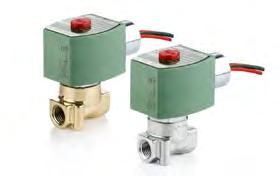
www.emerson.com
Danfoss Power Solutions has launched its PC-GO propel solution for single pump/ motor hydrostatic transmissions.

Comprised of the company’s PC036 safety controller and its PC-GO propel software, the platform offers multiple adjustable drive modes, including an ECO mode feature that maintains vehicle speed while reducing engine speed. PC-GO also offers built-in
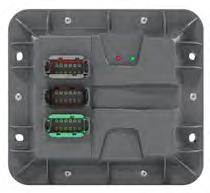
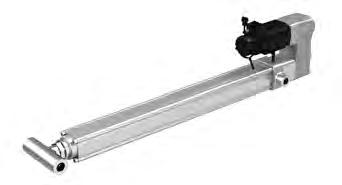
Ewellix has added electric actuators to its CASM line, specifically designed to replace hydraulics in mobile applications. The first products, due later this year, will include models with 3 tons and 15 tons lift capacities, the company says. The 5T actuator (CASM100) presents 10 kW peak power output at a cross section of 105 x 105 mm of the linear unit. The 3T model will offer 3.6 kW peak power output, at the cross section of 80 x 80mm, and the 15T actuator presents a 17kW peak power output at 130 x 130 mm. Depending on the configuration, the line will achieve maximum linear speeds (unloaded) up to 300mm/sec, at accelerations of up to 6 m/sec and stroke lengths of up to 2m. The line will also offer a choice of ballscrew or roller-screw drive mechanisms, different motors and either parallel or in-line gearbox options.
www.ewellix.com
Moxa has launched its UC-8200 Series Industrial PC, the first to meet the technical security requirements for certification under the ISA/IEC 62442-4-2 standard that addresses cybersecurity for operational technology in
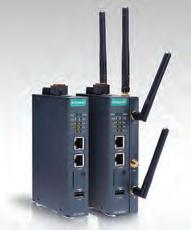
automation and control systems. The embedded computer features an ARM Cortex-A7 dual-core 1 GHz processor, dual SIM slots and a microSD socket, two 1000 Mbps Ethernet ports, one CAN port, a DIN-rail mountable IP30 metal housing and a temperature range of -40° to 85°C. For security, it incorporates a one-time programmable (OTP) fuse and Trusted Platform Module (TPM) 2.0 technology. It also runs Moxa Industrial Linux 3 (MIL3) that provides backup and restore utilities, automated system recovery features based on an overlay file system architecture and 10-year support.
www.moxa.com
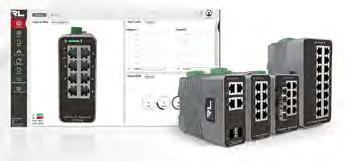
Red Lion has introduced its N-Tron NT5000, a series of gigabit Ethernet switches designed to improve network security and reliability for industrial organizations. The managed, layer 2 switches are available in 6, 8, 10, 16 and 18 port configurations in all-copper or a mix of copper and fiber options. With a metal enclosure and a wide temperature range, the NT5000 features password encryption, multilevel user access and MAC security and IEEE 802.1X with RADIUS remote authentication. The line also features port mirroring, N-Ring auto-member and cable diagnostics, as well as UL/CUL certification and compliance with FCC/ICES/ CE and ATEX/IECEx. www.redlion.net
Rockwell Automation announced it has revised its Allen-Bradley Branch Motor Control & Protection Solutions of motor control components, including contactors, circuit breakers and motor-overload relays. The company’s Bulletin 100-E architecture-class contactors use less energy, the company says, and covers AC and DC control circuits from 24 to 240 volts. The line offers safety versions, as well as NEMA-rated options. Bulletin E100 Electronic Overload Relays are also compatible with Bulletin

Mitsubishi Electric Automation, Inc. has released its MELSOFT Gemini 3D Simulator Software that provides visualization and simulation of manufacturing projects. The system employs a PC-based 3D digital space and connects directly to factory devices without having to go through an OPC server. With the software, engineers can test and debug the automation logic for machines and systems, as well as check the operation of the planned production facility prior to construction. As their projects advance into operation and maintenance phases, engineers can identify causes of abnormal occurrences in their production line using logged data to step through and review the error event on the synchronized 3D model, PLC sequence monitor, waveform display and/or video data. Gemini includes a hardware menu with approximately 2,500 types of production equipment, including robots, conveyors and processing machines. These can be combined in a simulated 3D production facility via drag and drop operation. Users can also set parameters to adjust the way the virtual production line operates.

https://us.mitsubishielectric.com

100-E and 100-C Contactors to enhance systems. Rockwell’s Bulletin 140MT line of motor protection circuit breakers and motor circuit protectors provides higher short-circuit ratings than the products they replace, the company says. And the range of E100/200/300 electronic overload relays includes options for EtherNet/IP integration.
www.rockwellautomation.com

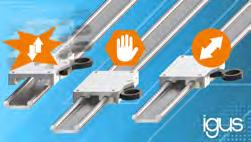
Thomson has introduced its Electrak XD linear actuator that handles loads up to 25,000N (5000 lbs), for a combined power output of more than 450W operating speeds of up to 75 mm/sec (3 in/sec). The actuator features shock dampening, as well as manual
brake release and override, which enable backdrive under load. With a stroke length up to 1200mm, the unit also features brushless motor technology and regen capability to reduce energy consumption. It also enables control and diagnostics through real-time position feedback, force feedback and control, and programmable end-of-stroke limits. It supports the CANopen or SAE J1939 CAN bus network that simplifies synchronization of multiple actuators.
www.thomsonlinear.com
OES has added its XYZR Series to their line of purpose-built stages. The four-axes series features the integration of any combination of 15mm, 30mm, 50mm, 75mm or 100mm linear stages for the X, Y and Z axes, and a 60mm or 100mm diameter rotary stage capable of 360 degrees of continuous rotation. The series comes in four options. The -01 option is stepper motor driven, the -02 option is three phase-servo motor driven with a quadrature optical encoder, the -03 is DC servo motor driven with a quadrature optical encoder, and the -04 option is stepper motor driven with quadrature optical encoders. The linear axes feature 1mm per turn lead screws and the 100mm linear travel stage has a 4mm per turn lead screw. Typical repeatability and positional accuracy of a stepper motor driven stage is 10 microns.
www.oesincorp.com


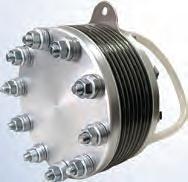
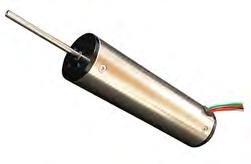
Moticont has released its SDLM-025-095-01-01M and SDLM-025-095-01-01 models, linear DC servo actuators that feature high repeatability, high acceleration/deceleration and zero cogging, the company says. Available in metric and imperial dimensioned, the models measure 25.4mm in diameter and
95.3mm long, with a 25.4mm (1.000 in.) stroke. They also have internally mounted linear encoders for closed loop servo operation. The 3.2mm non-rotating shafts have M2.2X0.45 x 5.1 min DP or 2-56 UNC-28 x 0.20 min DP threaded holes. The shafts are supported at both ends by plain linear bearings and can tolerate side loads up to 2.0N.

www.moticont.com


igus has introduced a variant of the clip-type linear carriage that can be mounted directly on the linear rail so that operating panels, camera systems, measuring and testing units as well as tools can be transported practically from A to B. The linear slide can be removed from the rail, placed on another guide and locked in the appropriate position. Its clamping lever fixes the carriage in place and protects against vibration and unintentional adjustment. Based on the company’s drylin W linear slide, its sliding foils are made from tribologically optimized plastics, allowing the carriage to glide quietly on its rail without smearing.
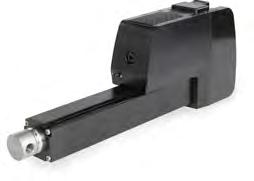
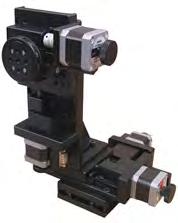
www.igus.com



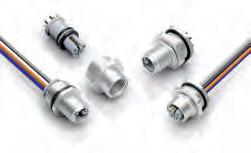
binder USA announced it has added feature combinations to its M12 portfolio. Combinations include 3, 4, 5, 8 and 12 pin











counts, as well as crimp, screw, clamp and IDT termination styles, a screw locking system, housing materials and shielding. The company is also developing M12-threaded products with outer push-pull locking and its own single-cable hybrid solution that combines seven signal contacts with two power contacts to allow power and signal supply in a single connector. For power supply, rated currents of 12A and voltages up to 63V are available. For signal transmission, rated currents of 0.5A and up to 12V are offered. Models meet the DIN EN IEC 61076-2-010 standard.
www.binder-usa.com

AutomationDirect announced it has added Socomec modular Midget and CC Class fuse holders to aid with the completion of overcurrent protection circuits in industrial systems. These finger-safe, DIN-rail mounted fuse holders are available in 1-, 2or 3-pole versions with a blown fuse LED indicator on select models. They are offered with up to a 30A capacity and a 200kA interrupt rating for CC Class fuse holders, and a 100kA interrupt rating for Midget Class fuse holders. Socomec modular fuse holders come with a 1-year warranty and are UL listed, CSA approved, CE marked and RoHS compliant.

www.automationdirect.com

WT C5 and WT C10. The systems allow wires with individual wire printing (black, white and light blue) and picking to be assembled ten times faster than by hand, the company says. The entry-level WT C5 variant features five vibratory bowl feeders for wire-end ferrules and a wire-end treatment feature for wires with cross-sections ranging from 0.5 to 2.5mm². The product also cuts to length, labels and crimps. The WT C10
variant has ten vibratory bowl feeders for wire-end ferrules with wire cross-sections of up to 6mm² as default. Both variants are operated via a 24-inch display. Its wire feeding system features three feed blocks for up to 36 wires and with 12 wire types per feed block. An RFID transponder automatically secures the wire feed.

www.rittal.com
Rittal announced the release of two fully automated wire processing machines, the


POSITAL announced an upgrade to its IXARC series of incremental rotary encoders. The line now makes use of a TMR (tunnel magneto-resistance) sensing technology in place of the Hall-effect sensors used on previous models. According to the company, TMR sensors offer higher magnetic sensitivity and are less temperature sensitive and more energy-efficient. The TMR sensors will also be connected to next generation microcontrollers that offer a 60% energy consumption improvement, the company says, over

older components and can support new signal processing algorithms. POSITAL says the upgraded line remains mechanically and electrically compatible with earlier models, but with reduced power consumption.
www.posital.com
Teledyne DALSA introduce the Z-Trak LP2C, a 3D profile sensor family for in-line 3D measurement and inspection applications. The LP2C 4K sensors deliver 4,096 samples per profile and an x resolution down to 3.5 microns.
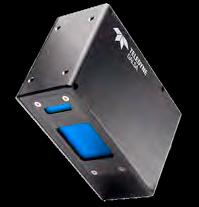
Factory calibrated, the sensor models are available for measurement ranges of up to 650mm and have a horizontal field-of-view of up to 1200mm. The series can also handle a variety of surface and material types with its red and blue eye-safe lasers. The line also features in-line processing capabilities to improve and enhance the profiles. In addition, it can generate additional metadata that up-stream algorithms can use to eliminate un-wanted reflections, the company says. www.teledynedalsa.com
Vision Research introduced its Phantom T4040 high-speed camera, that features a back side illuminated (BSI) 2560 x 1664 sensor that has a light sensitivity with a peak quantum efficiency more than 90 percent. Its 4-megapixel (Mpx) sensor is capable of a full resolution maximum frame rate of 9,350 fps and throughput of 39.8 Gpx/s. It also includes EDR, which mitigates the effects of bright flashes, and binning mode, which combines pixels to achieve 39,000 frames per second (fps) at 1 Mpx and up to 444,000 fps at a resolution of 1280 x 64. The T4040 also includes on-camera controls, video outputs, CineMag 5 compatibility up to 8TB and up to 256 GB of memory.

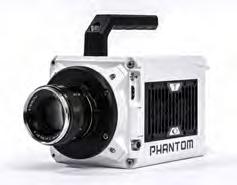
www.phantomhighspeed.com
Ottawa’s Pleora Technologies has introduced its iPORT NTx-Deca, an embedded interface that transmits low latency GigE Vision video and data at 10 Gbps over Cat
6A Ethernet cabling up to 100 meters. The GigE Vision 2.0 compliant interface streamlines interoperability in multi-vendor imaging systems and applications, the company says. The iPORT NTx-Deca also integrates Image Management Database features including the ability to store video frames with associated patient metadata and the ability to retrieve data in case of power failure. The embedded interface also supports IEEE 1588 Precision Time Protocol (PTP) to synchronize image capture and imaging system elements with PLC integration to connect to and control manufacturing or inspection system components. The iPORT NTx-Deca is supported by Pleora’s eBUS Software Development Kit for image capture, display and transmission. www.pleora.com
Teledyne e2v has released its Optimom 1.5M, a range of board-level vision extensions, the unit is comprised of a CMOS image sensor, a 25mm square board with lens mount and an optional lens in various options. Featuring a native MIPI CSI-2 protocol, the module’s development kit includes adapter board, cabling and Linux drivers. Featuring a 1.5 Megapixel CMOS image sensor, Optimom 1.5M provides a 1,920 x 800 format. The module’s optional Auto Focus lens offers an extended depth of focus and can be combined with various Multi Focus or Auto Focus algorithms.
www.teledyne.com

Langley, BC
April 12, 2023
Langley Events Centre
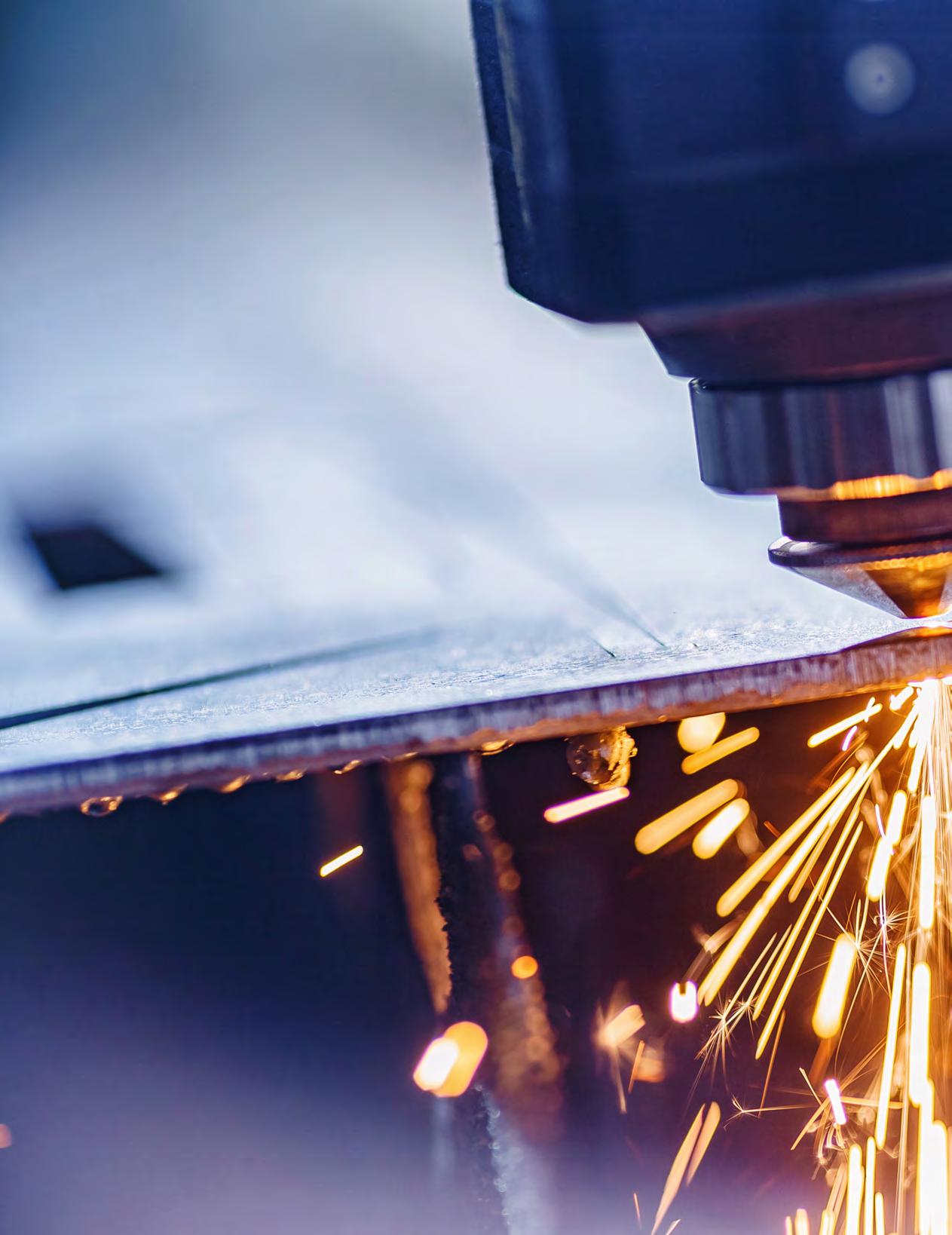
Winnipeg, MB
May 2, 2023
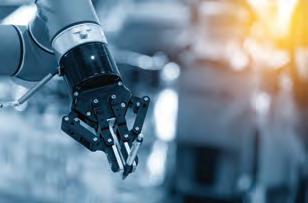
Victoria Inn Hotel & Convention Centre
Drummondville, PQ
June 7, 2023
Centrexpo Cogeco

Drummondville

Mississauga, ON
September 7, 2023
Mississauga Convention Centre

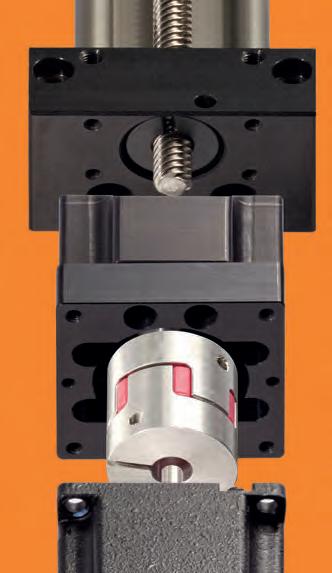



• One part number/one supplier


• Quiet and Clean operation
• Self-lubricating
• Corrosion-resistant
• Lightweight